With unique and beautiful architecture, you definitely should not miss visiting the temple when traveling to Japan.
Although there are no strict rules regarding etiquette when visiting a temple, there are still general principles that you need to follow, such as clasping your hands and worshiping before entering the temple, purifying your body and mind. with water and incense smoke before entering the main hall.
In this article, I will introduce 5 basic steps in visiting etiquette and how to pray at temples in Japan.
Hopefully it will help you experience Japanese temples more fully and uniquely.
Clasp your hands and bow at the Sanmon gate before entering
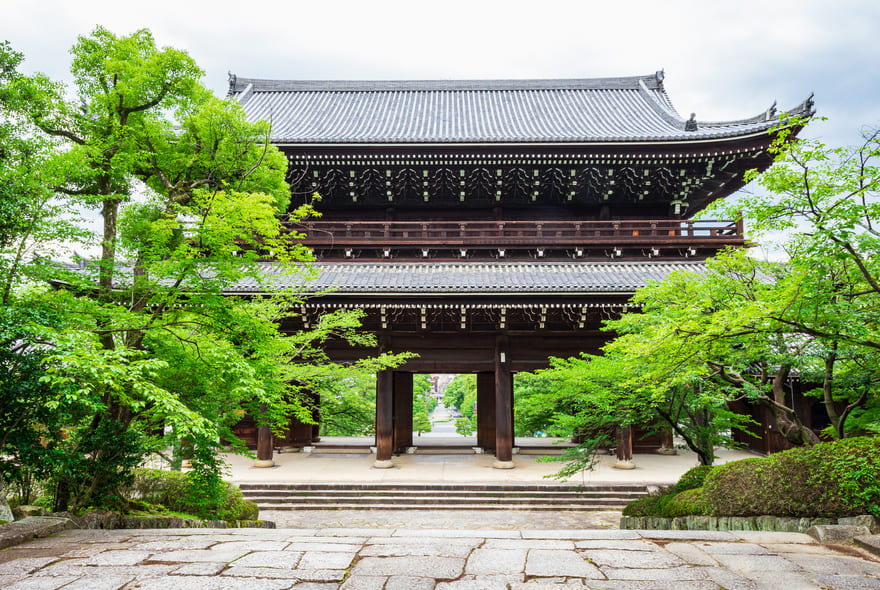
Sanmon Gate (山門) is the entrance gate to the temple, serving as a barrier between the secular area and the sacred area.
Before entering, clasp your hands and bow before the Sanmon gate as a request for permission to enter the “house” of the Buddhas.
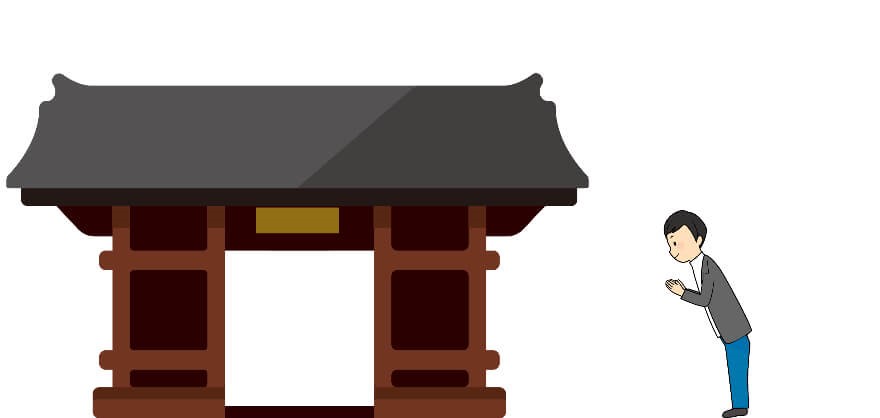
Note:
Do not step on the threshold when passing through the Sanmon gate.
Water purification in Chōzuya
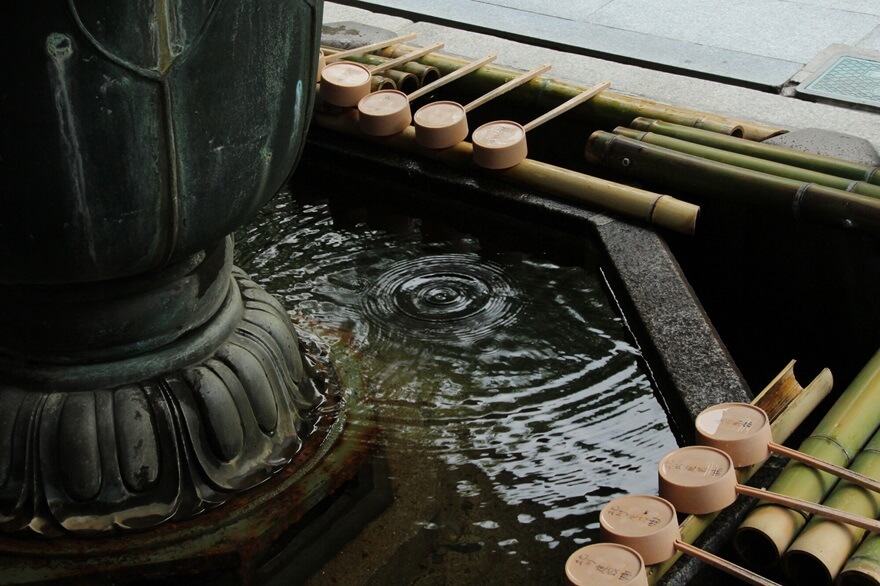
Chōzuya (手水舎) is an area that provides water for visitors to purify their minds and bodies before meeting the Buddhas.
Please use the water ladle placed here to wash your hands and mouth before entering the main hall.
Proceed as follows:
- Hold the ladle with your right hand, scoop water and wash your left hand.
- Switch the handle to your left hand and wash your right hand.
- Switch the handle to your right hand, scoop a little water into your left hand.
- Use the water in your left hand to rinse your mouth and spit the water out next to the water tank. Absolutely do not rinse your mouth directly with a ladle.
- Wash your left hand again.
- Hold the ladle upright with both hands to rinse the handle with the remaining water. Then put the ladle back to its original position.
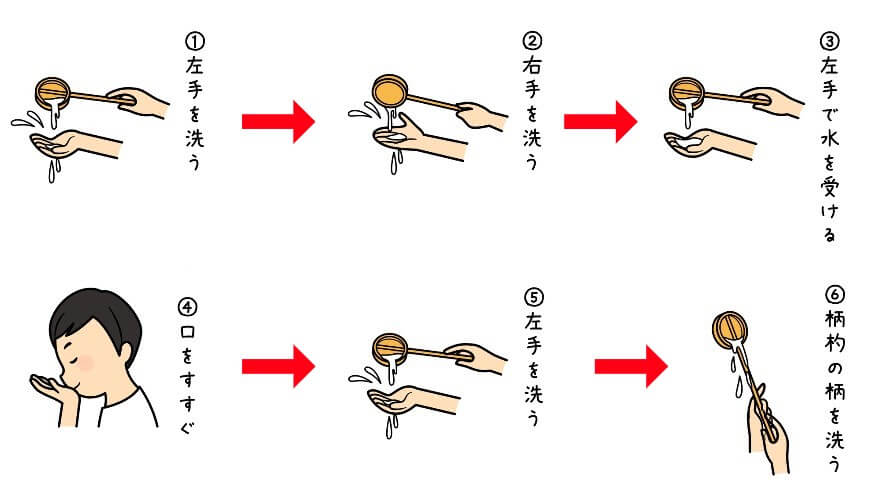
Note:
- In case there is no ladle available in the Chōzuya area, proceed the purification ritual by: washing your hands first, pouring water into your hands to rinse your mouth, and then rinsing your hands again.
- You should prepare handkerchiefs or paper towels for convenient wiping after washing.
Smoke purification in Jōkōro
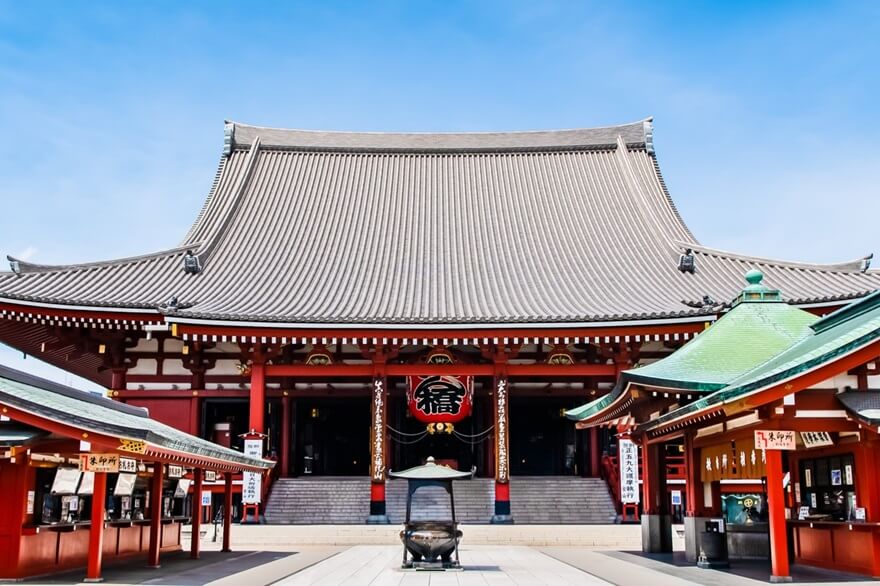
From the Chōzuya (hand washing area) to the main hall, you will encounter a large incense burner placed in the middle of the temple grounds.
This incense burner in Japanese is called Jōkōro (常香炉).
Wave the incense smoke of Jōkōro towards you to purify your soul before entering the main hall.
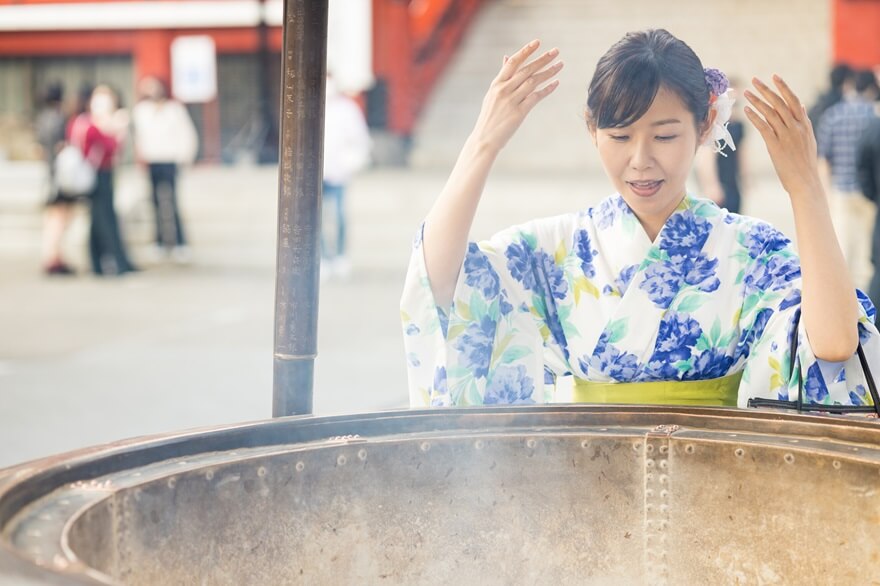
Pray in the main hall
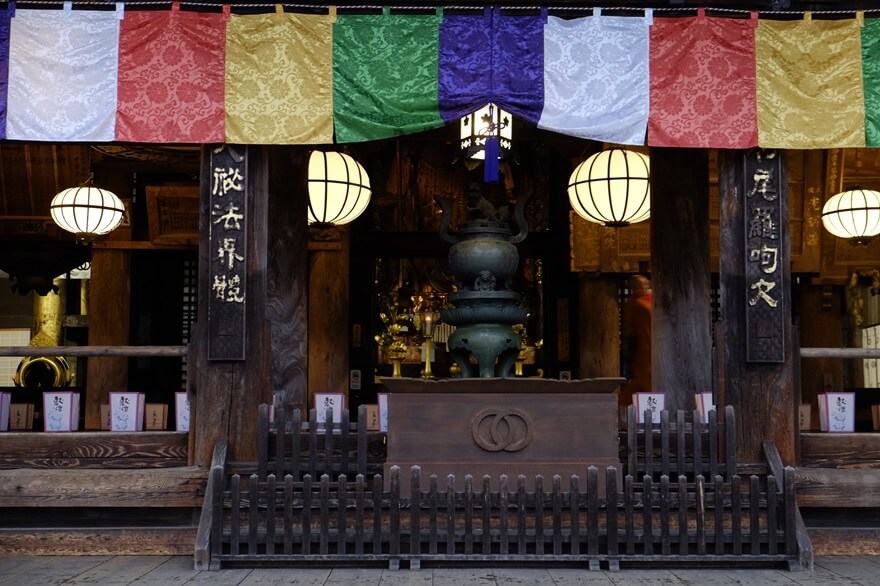
At the main hall, perform the following prayer ritual:
- Gently put the money into the offering box.
- If there is a bell in the offering box, hold the rope and gently shake it 2 ~ 3 times to ring the bell.
- Clasp your hands in front of your chest and pray.
- Still clasping hands in front of your chest, bowed deeply.
- Bow once more and finish.
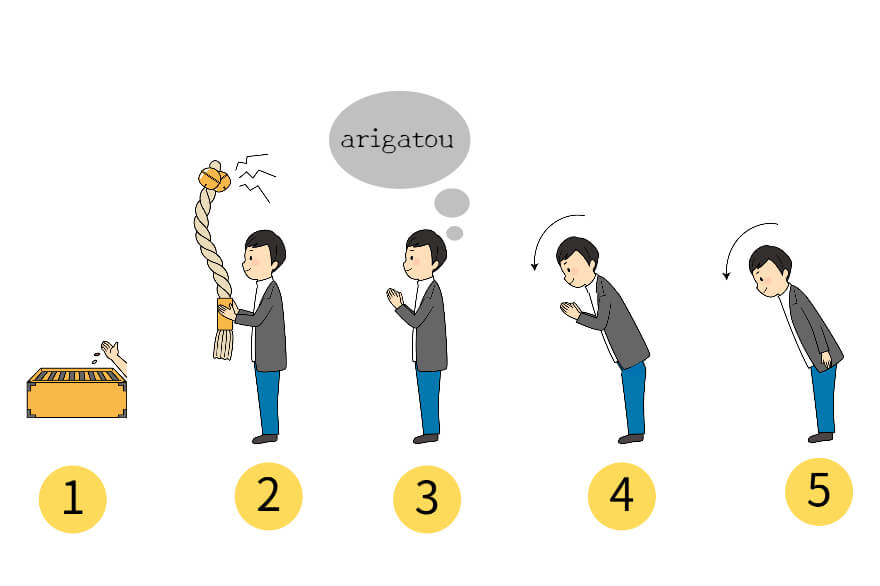
Note:
- If you see other people in line, stand at the end of the line and wait your turn.
- If you go in a group, you can step up and pray together.
- There are no specific regulations on the amount of offerings. You can use the amount in your wallet at the time, such as 50 yen or 100 yen.
- Before saying your wishes, express your gratitude to the Buddhas. It is said that doing so will make your prayers more effective. Try it!
Clasp your hands and bow before leaving
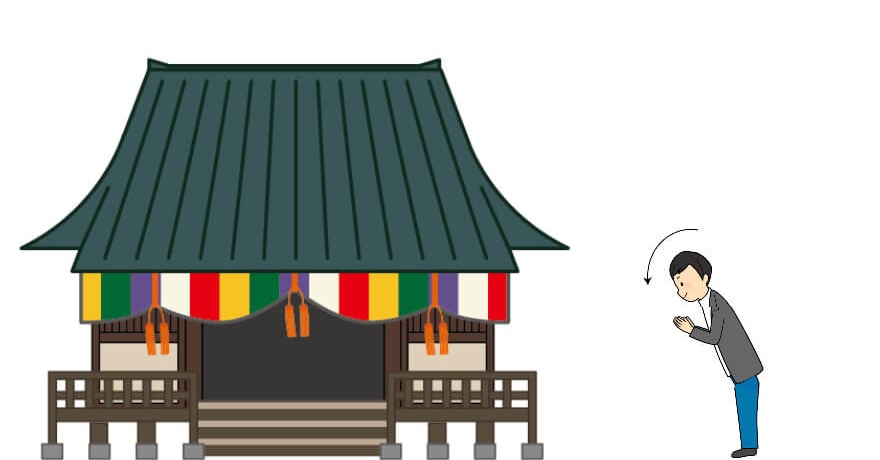
Before leaving the Sanmon gate, turn towards the main hall, clasp your hands and bow once to show your respect.
Conclusion
In this article, I have introduced 5 basic steps when visiting temples in Japan.
- Clasp your hands and bow at the Sanmon gate before entering.
- Use water from Chōzuya to wash in this order: left hand right hand mouth left hand hand holding dipper.
- Use the smoke of Jōkōro to purify your soul.
- Clasp your hands to pray in the main hall.
- Clasp your hands and bow before leaving.
Combine the above knowledge with respect when visiting temples, to experience Japanese temples more deeply and completely.

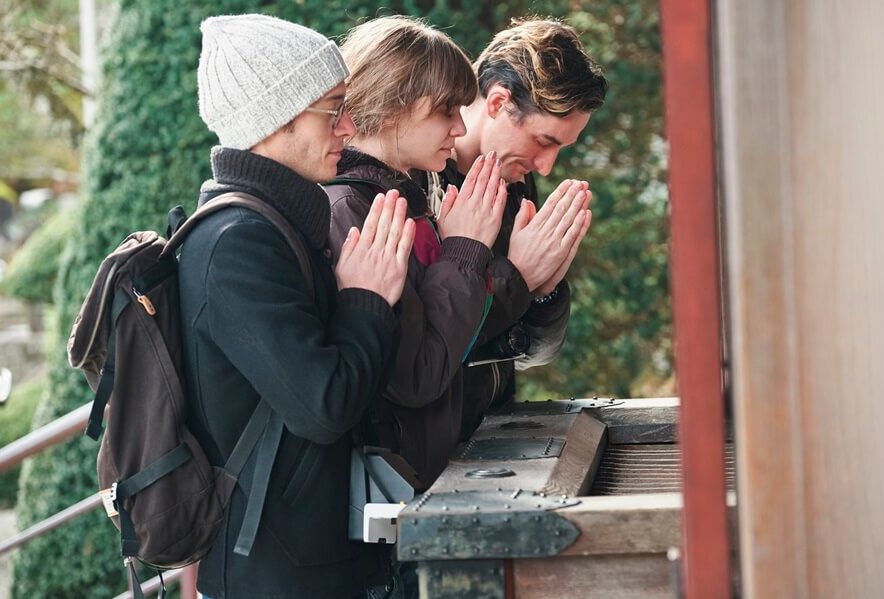
Comment